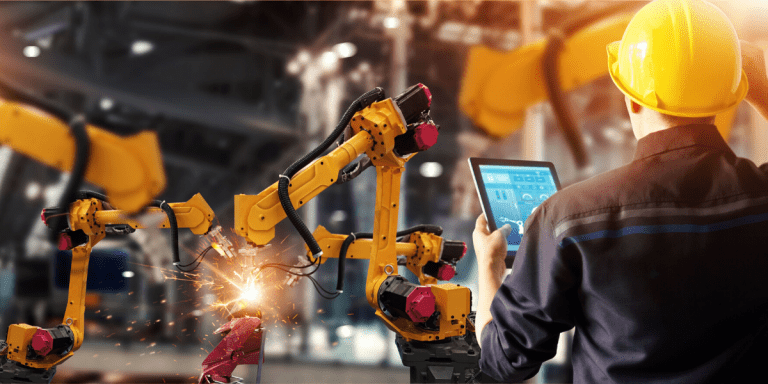Artificial intelligence is currently a genuinely created technology. It finds far-reaching use in various businesses, such as gaming, banking, business, retail, and government applications also.
The manufacturing business has been delayed to get on board with the temporary fad, in a manner of speaking, as of late understanding the genuine estimation of Industrial Automation.
Modern Revolution 4.0 as it is called makes a more grounded advanced economy on the foundation of automated tasks, which enables it to reconfigure how individuals and machines communicate with one another and work together to make the world as we experience it.
The main thing we consider when we consider AI isn’t the means by which it can give complex basic leadership in the manufacturing business, or how it can tackle issues identified with data over-burden. Be that as it may, it’s everything occurring, and the assembling business is set to encounter a portion of its greatest changes yet!
The manufacturing sector is an ideal fit for the use of artificial intelligence. Despite the fact that the Industry 4.0 transformation is still in its beginning times, we’re as of now seeing huge advantages from AI.
From the structure procedure and production floor to the supply network and organization, AI is bound to change the manner in which we fabricate items and procedure materials until the end of time.
ways in which AI is transforming the manufacturing industry:
1. Directed Automation
AI and robots together have altered large scale manufacturing, and this is one of the regions where they have the greatest effect. Robots can continue doing likewise action again and again, without getting worn out or expanding the extent of mistake as time advances – subsequently, they can give elevated levels of value affirmation.
2. Round the Clock Production
Robots don’t have similar human impediments that human specialists have and can keep on working for the duration of the night just as the day. Because of this immeasurability, robots can definitely grow the generation capacities of organizations, enabling them to scale up and take into account bigger crowds.
3. Safer Environment for Production
Work environments, particularly in the manufacturing business, are frequently risky work environments. There can be no telling which equipment may give route sooner or later, or when a human mistake will crawl.
With robots supplanting people working environment mishaps will likewise go down since robots are not equipped for making a similar sort of mistakes or even make them at a similar scale.
4. Better Opportunities for Humans
With Artificial intelligence assuming control over the replaceable, low-ability level of employments from people, they will turn out to be progressively engaged to take up occupations that will have any kind of effect in their lives just as in their general surroundings.
They can turn their concentration to confused undertakings that require a blend of both IQ and EQ – something AI will be probably not going to progress admirably.
5. Lower Cost of Operation
In spite of the fact that the underlying capital speculation required to bring AI into any portion of the manufacturing business will be critical, it will prompt extensive ROI in the more drawn outrun.
As processing power and innovative capacities develop step by step, with AI makers will have the option to settle on a quicker automated decision, acknowledge vaster adaptability, encourage faster and more profound product development. This will, obviously, add to the income of the organization just as lessen the working expenses – taking into account that AI is a one-time investment with long-lasting returns.
Wrapping up that artificial intelligence is a change in perspective from hard-coded, costly, first-standards based, resolute answers for versatile self-learning arrangements dependent on a lot of information and AI calculations.
Organizations that understood the capability of AI early, for example, Google and Amazon, have far outperformed their peers and developed aggressively, to a great extent because of their better capacity than anticipate and persistently adjust to changing conditions and to create higher edges.
For organizations with unstable edges and capital-advertise pressures, the stakes and the open door cost of not adjusting are high. Producers with overwhelming resources that can not peruse, decipher, and utilize their very own machine-created information to improve execution by tending to the changing needs of clients and providers will rapidly miss out on their rivals or be acquired.
Fortunately, process-industry plants are routinely catching and putting away tremendous measures of machine data that they can promptly mine to make algorithms. This implies despite the fact that they may have fallen behind on the mechanical front, with direction from external specialists and interim external resources as a scaffold, concrete plants, and producers with overwhelming resources can rapidly make up for the lost time.

